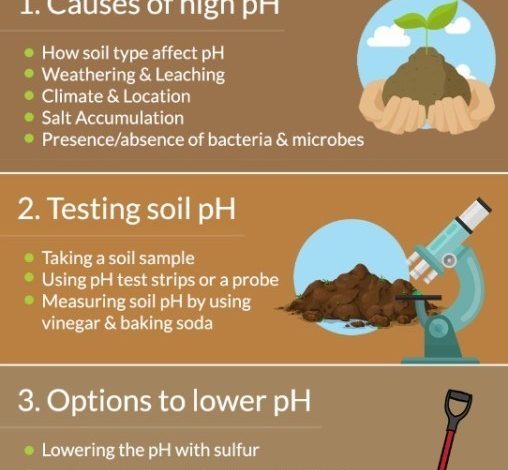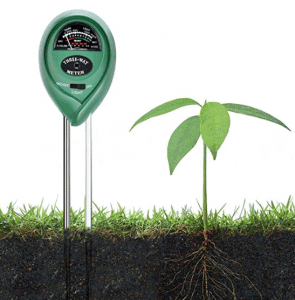Change Soil pH: [Adjust, Change, Raise or Lower it]

Surely you have seen on many occasions how important it is for the soil to have a certain pH to grow fruits or vegetables.
This pH measures the level of acidity or basicity that the soil has and when it is not at the correct level, the crops do not prosper and we are very frustrated.
But there is nothing to worry about because there are techniques that will help these have the exact conditions that we want.
What does it mean to change the pH of the soil?
Changing the pH of the soil means adding components that help increase or decrease its acidity.
This is a process that is carried out in order to offer a determined plant the best conditions for its development.
Why do we want to change the pH?
 The main reason for wanting to change the pH of a soil is to ensure that plants can get all the nutrients they need from the soil.
The main reason for wanting to change the pH of a soil is to ensure that plants can get all the nutrients they need from the soil.
When a soil is very acidic (with a pH lower than 7), it prevents plants from taking advantage of the micronutrients found in the soil.
These micronutrients, such as boron or calcium, are key so that most crops can have optimal development.
On the contrary, basic soils (with a pH greater than 7) do not have essential minerals such as iron and copper within their structure.
In addition to that, they exert a barrier that prevents water from running easily, so they have poor drainage.
In some cases basic soils are also known as alkaline.
When the pH is 7, the soil is said to be neutral.
How to know what the pH of the earth is?
For more accurate results, there are laboratory tests. But inside the house we can take advantage of the resources at our fingertips.
One of the easiest ways to carry out this work is with litmus paper, which is commercially available and will be used like this:
- In a container, place the soil that you are going to assess, taking care that it does not have the remains of other elements such as leaves or branches.
- You are going to create a mixture between this soil and a little distilled water. The consistency should be runny but not watery.
- Place the litmus paper inside the mixture and wait the time indicated by the manufacturer.
- Remove the paper and rinse it with a little distilled water to remove any traces of dirt.
- Check the results according to the manufacturer’s instructions and you will know what the pH of that soil is.
How to raise the pH of the soil?

To get the pH of the soil to rise, one of the best strategies is to apply ground limestone (also called lime).
This milled version will help it stick to the ground more easily. However, a bit of work will have to be done on it.
The first thing is to define the times well, since it will be necessary to do four months before planting to start this process.
In addition, the work must be applied to the first 20 cm of soil depth to achieve good results, so plowing will be necessary.
The idea is to spread the limestone over the entire surface, stir and then water frequently because it is essential for basicity.
How to lower the pH?
If you are looking for a slightly more acidic soil, sulfur is the most favorable alternative.
In this case, it will be necessary to work at least six months in advance.
The idea is similar to the interior case, seeking to unite the earth with the sulfur and stir constantly so that it takes effect.
Of all the possibilities offered by the market to add acidity to the soil, this is by far the most economical.
Having a soil with an appropriate pH for the crops that we are going to make is essential, otherwise we will waste time because that plant will not harvest anything.
References and bibliography
- Effect of soil moisture, temperature and pH on microbial activity at the laboratory level.
- SOIL pH AND AVAILABILITY OF NUTRIENTS.
- Incidence of fertilizers on soil pH. Irantzu Ginés and Ignacio Mariscal-Sancho.
- CHANGES IN THE pH OF THE PROFILE OF AN ACID SOIL CULTIVATED AND AMENDED WITH VARIOUS MATERIALS TO INCREASE ITS FERTILITY.




